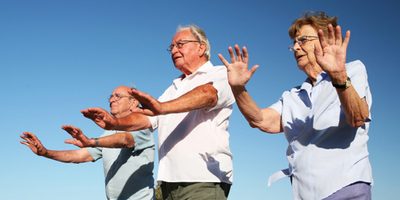
Research proves Tai Chi benefits for arthritis
A new study by The George Institute has found Tai Chi to have positive health benefits for musculoskeletal pain. The results of the first comprehensive analysis of Tai Chi suggest that it produces positive effects for improving pain and disability among arthritis sufferers.
The researchers are now embarking on a new trial to establish if similar benefits can be seen among people with chronic low back pain.
"This is the first robust evidence to support the beneficial effects of Tai Chi. Our study proves that Tai Chi relieves pain and disability among people with arthritis and shows a positive trend towards effects for overall physical health. We now want to see if these benefits are the same for people suffering from low back pain", said author Dr Chris Maher at The George Institute.
Musculoskeletal pain, such as that experienced by people with arthritis, places a severe burden on the patient and community and is recognised as an international health priority. Arthritis is the major cause of disability and chronic pain in Australia, with 3.85 million Australians affected. Low back pain is the most prevalent and costly musculoskeletal condition in Australia, estimated to cost up to $1billion per annum with indirect costs exceeding $8 billion.
"This research should reassure people with musculoskeletal conditions such as arthritis to seek exercise to relieve the pain. The fact that Tai Chi is inexpensive, convenient, enjoyable and conveys other psychological and social benefits supports the use this type of intervention for pain conditions", added Ms Amanda Hall, The George Institute.
Tai Chi is a form of exercise that is regularly practiced in China for general health purposes and has gained increasing popularity in North America and Australia and thus a growing body of research aimed at investigating its health benefits has emerged.
Tai Chi is a versatile activity that can be easily incorporated into people’s daily activities. Usually preformed in a group, Tai Chi can also be practiced individually, which differs from traditional exercise therapy approaches in clinic.
References
- A randomized controlled trial of tai chi for long-term low back pain (TAI CHI): Study rationale, design, and methods
- Arthritis Australia
- Australian Institute of Health and Welfare. Australia's health 2000: the seventh biennial health report of the Australian Institute of Health and Welfare. 7th ed. Canberra: AIHW, 2000
- Walker B, Muller R, Grant W. Low back pain in Australian adults: the economic burden. Asia Pacific Journal of Public Health 2003;15(2):79-87



